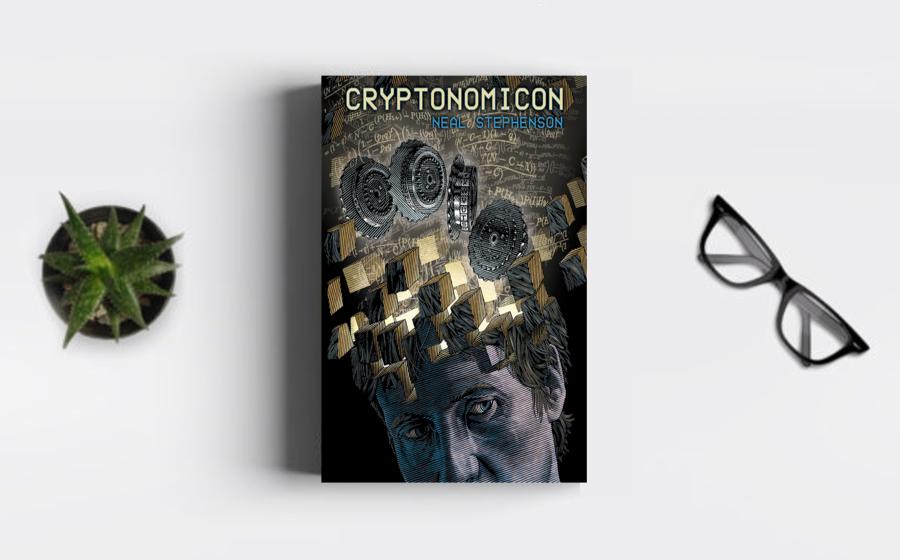"Cryptonomicon," published in 1999, stands as a
groundbreaking work that seamlessly blends science
fiction with historical fiction, exploring the
intersection of technology, cryptography, and human
history. Spanning two distinct time periods - World War II
and the late 20th century - the novel weaves together
intricate plotlines that delve into the worlds of codebreaking, entrepreneurship, and the consequences of
technological innovation. "Cryptonomicon" is not only a
gripping tale of adventure and intrigue but also a
thought-provoking exploration of how technology shapes
human existence and the intricate connections between
the past and the present.
The narrative unfolds
along two primary timelines. In World War II, Lawrence
Pritchard Waterhouse, a mathematician and cryptanalyst,
is working on Allied codebreaking efforts. His story is
intertwined with that of Bobby Shaftoe, a Marine serving
in the Pacific theater. The other timeline takes place
in the late 20th century and follows Waterhouse's
grandson, Randy, as he navigates the world of computer
technology and business ventures.
One of the
groundbreaking elements of "Cryptonomicon" is its
intricate narrative structure, which interlaces
historical events with a near-future exploration of
technology and entrepreneurship. Stephenson seamlessly
weaves together the seemingly disparate storylines,
creating a literary tapestry that spans decades and
continents. This innovative structure allows the novel
to transcend traditional genre boundaries, offering
readers a unique reading experience that combines
elements of historical fiction, techno-thriller, and
speculative fiction.
The novel's exploration of
cryptography is a central and groundbreaking theme.
Stephenson delves into the world of codebreaking during
World War II, examining the Allied efforts to decipher
Axis communications. The portrayal of Lawrence
Waterhouse's work at Bletchley Park, where cryptanalysts
such as Alan Turing made significant contributions to
breaking the Enigma code, provides a rich and
historically grounded backdrop. The novel goes beyond
mere historical documentation, delving into the
intellectual and strategic challenges faced by
cryptanalysts and presenting cryptography as a dynamic
and evolving field that continues to shape the course of
history.
Stephenson's treatment of technology and
entrepreneurship in the late 20th century is equally
groundbreaking. The character of Randy Waterhouse, along
with his friends and associates, engages in a
technologically driven business venture that anticipates
the dot-com boom of the late 20th century. The novel
explores the cultural and economic shifts brought about
by the rise of the internet, anticipating the
transformative impact of technology on society.
Stephenson's prescient depiction of the digital
landscape and his exploration of the intersection
between technology and commerce contribute to the
novel's status as a groundbreaking work of science
fiction.
"Cryptonomicon" challenges conventional
notions of historical fiction by blending meticulously
researched historical events with speculative and
futuristic elements. Stephenson skillfully navigates
between the past and the present, drawing parallels
between the World War II era and the digital age. The
novel's ability to seamlessly integrate historical
accuracy with speculative elements sets it apart,
offering readers a rich and immersive experience that
bridges the gap between the familiar and the
speculative.
The novel's treatment of characters
is another groundbreaking aspect. Stephenson creates a
diverse cast of characters, each with their own
motivations, strengths, and flaws. From the brilliant
but eccentric Lawrence Waterhouse to the resourceful and
enigmatic Bobby Shaftoe, the characters in "Cryptonomicon"
are multi-dimensional and defy stereotypes. The novel's
exploration of the complexities of human nature,
ambition, and moral choices within the context of
technological and historical upheaval adds depth to the
narrative, elevating it beyond traditional science
fiction fare.
Stephenson's writing style is
marked by a unique blend of technical detail, humor, and
philosophical inquiry. The novel is replete with
discussions on mathematics, cryptography, and the
philosophy of technology, creating a narrative that
engages readers both intellectually and emotionally. The
author's ability to convey complex technical concepts in
an accessible and engaging manner is a testament to his
skill as a storyteller and a contributor to the novel's
groundbreaking nature.
The novel's impact on the
discourse surrounding technology and society is evident
in its influence on subsequent works of fiction and
non-fiction. "Cryptonomicon" has been praised for its
insight into the cultural and economic implications of
technological advancements, and its exploration of
cryptography has inspired discussions in both academic
and popular circles. The novel's ability to anticipate
and dissect the societal consequences of technological
innovation has solidified its place as a seminal work in
the realm of science fiction.
"Cryptonomicon" stands as a groundbreaking work that transcends traditional genre boundaries, blending historical fiction with speculative elements and exploring the profound impact of technology on human history. Neal Stephenson's intricate narrative structure, meticulous research, and prescient exploration of cryptography and digital culture contribute to the novel's status as a masterwork of techno-historical innovation.






